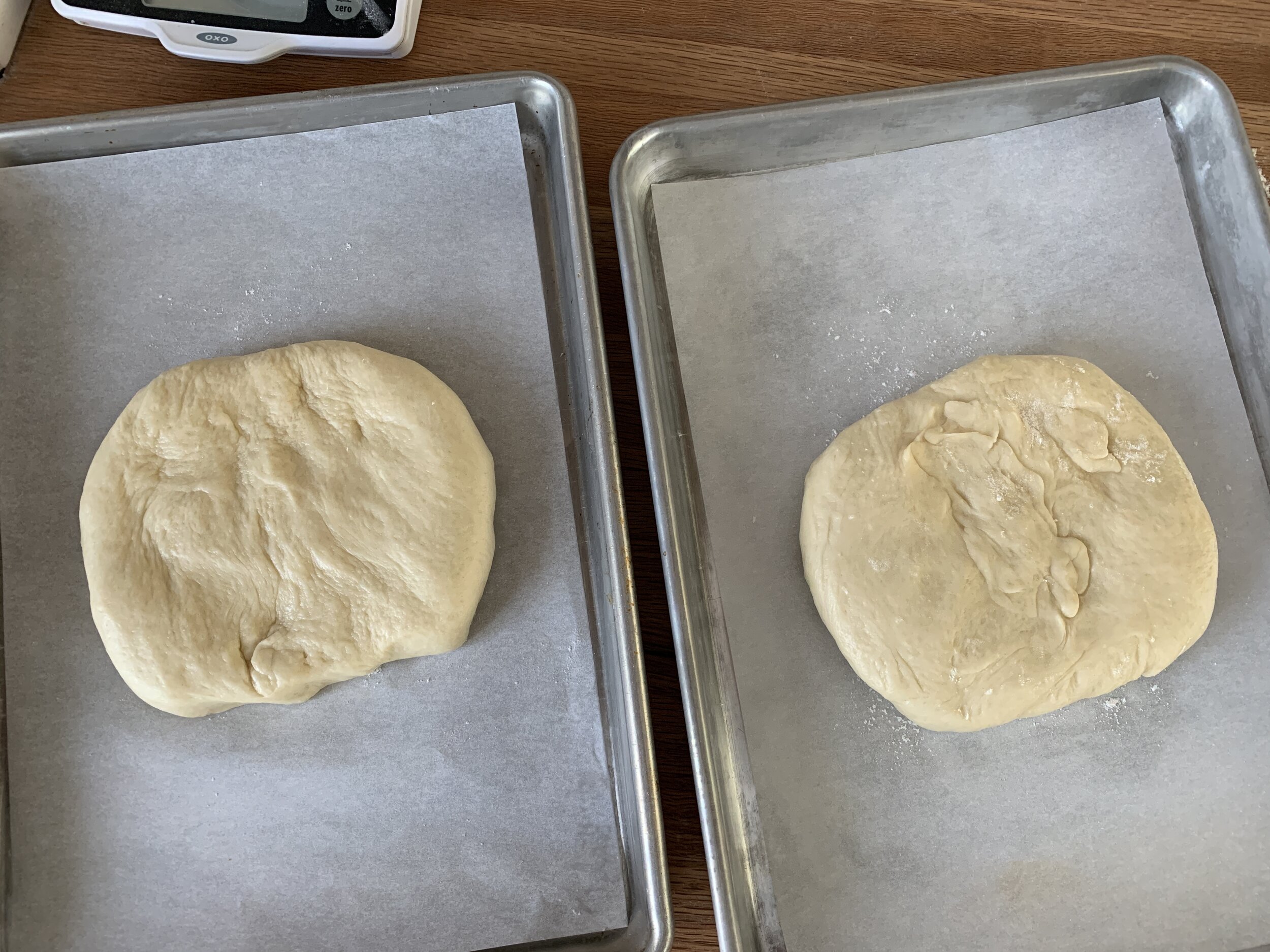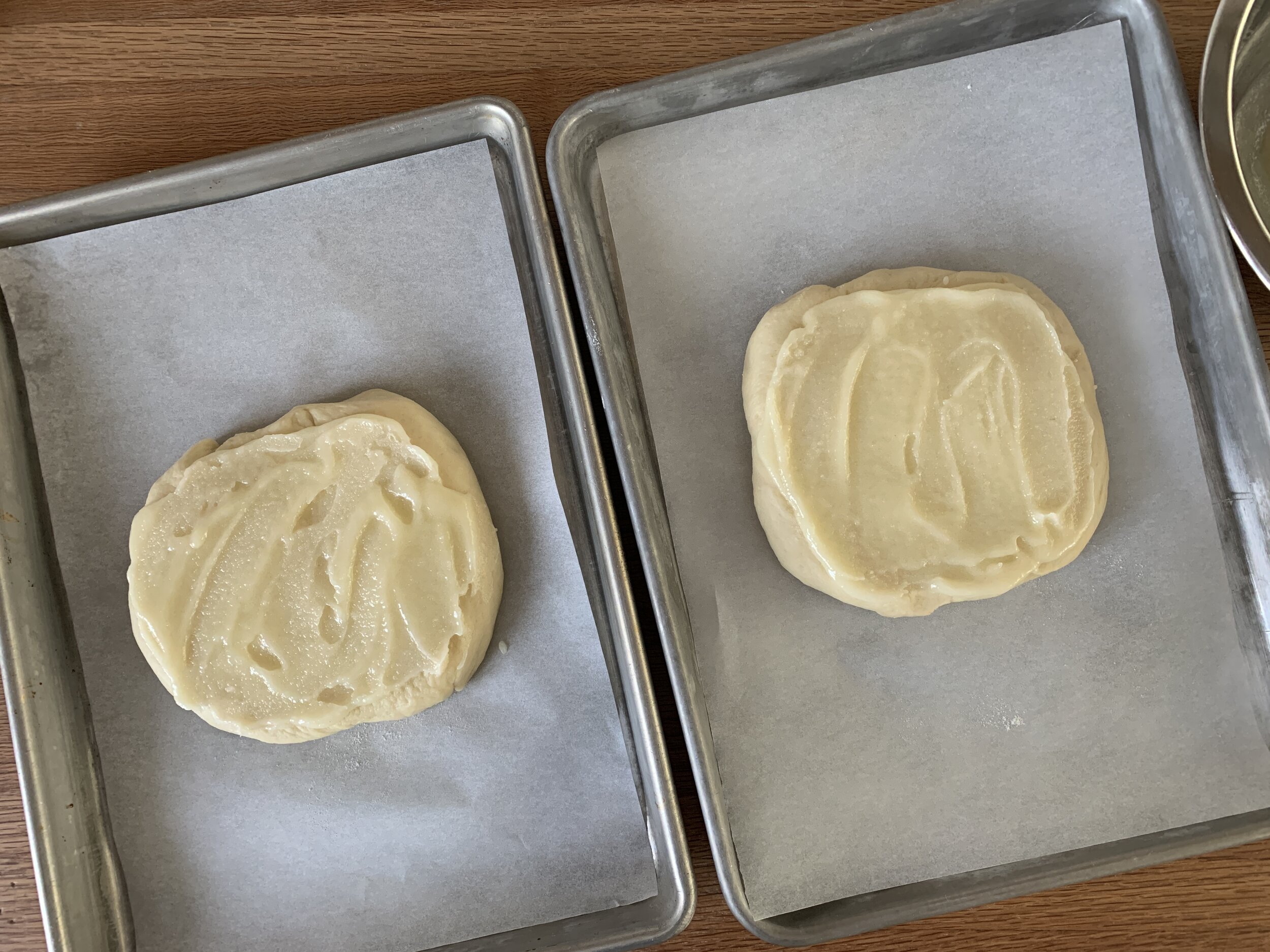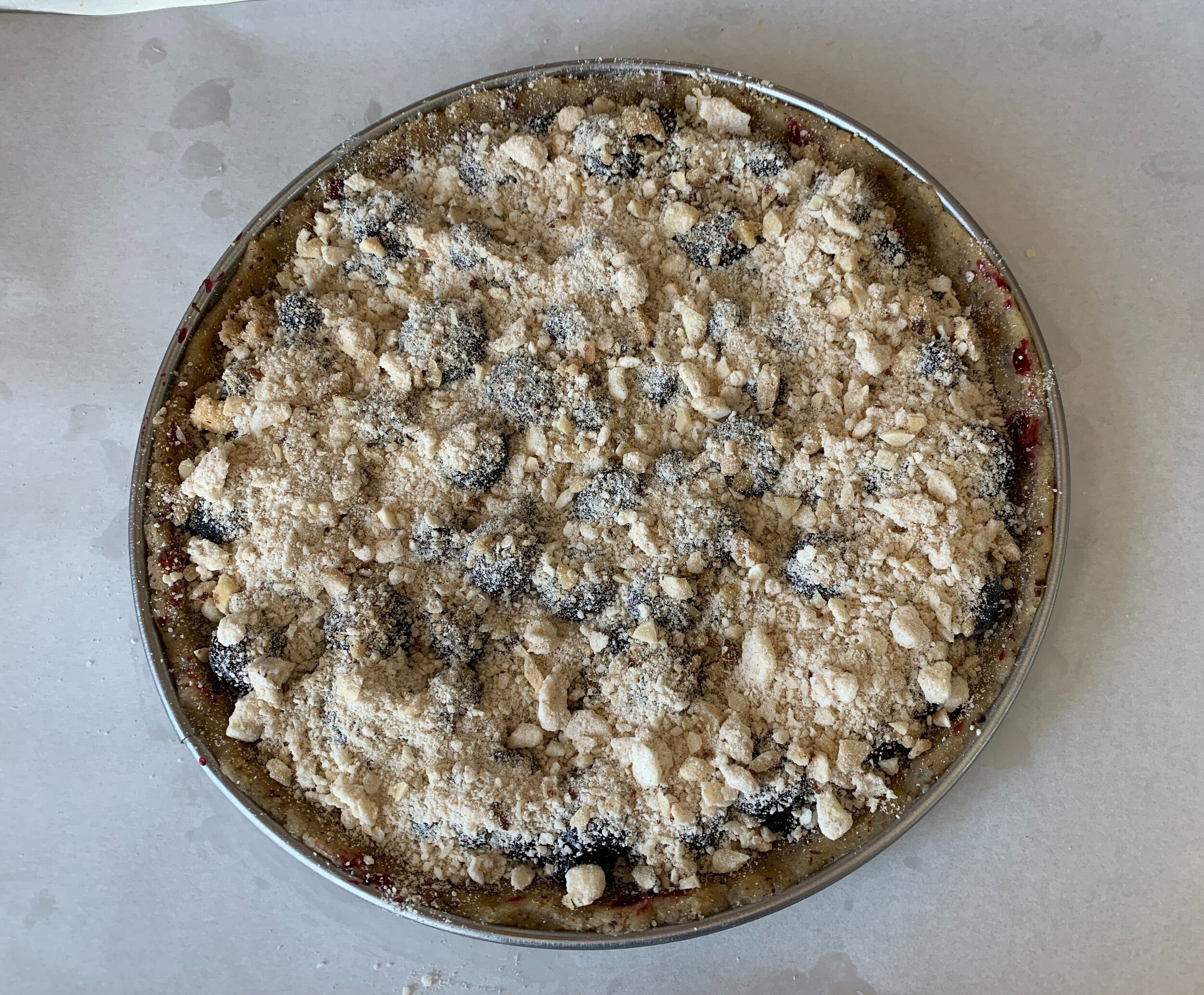Fougasse au sucre
/Time for something a little different - a sweet version of fougasse, that classic Provençal flat bread that many of us recognize as a savory treat. Often referred to as the French version of Italian focaccia, it’s usually baked with olives and herbs but you can certainly play around with it - leave the olives out and top it with thinly sliced potatoes, grated cheese and a nice sprinkling of sea salt.
On the sweet side, a bit of quick research finds this brioche like bread is traditionally associated with the Camargue region (known for its fleur de sel ) at the mouth of the Rhone, in between Montpellier to the west and Marseilles to the east. The recipes I perused use butter, milk and eggs in the mix (hence its brioche-ness) and the top is sprinkled with orange flower water and sugar before baking to create a crunchy top.
However . . . . . This recipe comes from “The French Baker” by Jean Michel Raynaud, a native born Frenchman who lives and works in Australia. He has fond childhood memories of staying with his sister at their grandparents home in a small village in Provence and enjoying “two slices of crunchy, buttery fougasse . . . . with a bowl of chocolat chaud” on Sunday mornings. Ahhh youth!
His dough base is more along the lines of focaccia, using all purpose flour, water, olive oil, salt and yeast with some added sugar and butter but no milk or eggs,
It’s a straight forward direct dough (no poolish or preferment) that yields two loaves.
You’ll need 100 g each unsalted butter, granulated sugar and heavy cream for the topping so be sure you have those on hand. The butter/sugar will be spread over the shaped dough before the second proof, and the cream will be poured over the dough after it goes in the oven. Imagine that!
For the dough you’ll need 40 g unsalted butter at room temp so have that set aside - it’s added last. In the bowl of a stand mixer fitted with the dough hook combine 340 g all purpose flour, 190 g cold water, 70 g granulated sugar, 30 ml (2 TBSP) extra virgin olive oil, 6 g fine salt and 3 g instant yeast. Knead on low for 2-3 minutes until the dough comes together. Increase to medium and knead for 8-10 minutes. You want the dough to come away from the sides of the bowl as it becomes smooth, soft and elastic.
Now add the 40 g of butter and knead another 2-3 minutes to incorporate it. I found that at first it smeared quite messily and buttery around the sides of the bowl but it all blended together just fine in the end.
Cover the bowl with a towel and let proof about an hour until increased by about two-thirds.
After first proof
Now it’s time to divide the dough in half - each should weigh about 345 g, give or take. Place a portion on a lightly floured surface and flatten the dough to a round about 2 cm thick (about 3/4 inch). Do the same with the second portion. Don’t be too fussy with it. Put each on a parchment lined 1/4 sheet pan (or you can put them both on a 1/2 sheet pan with space in between if you’d like) and place in the freezer for about 20 minutes.
Meanwhile place 100 unsalted butter and 100 granulated sugar in a small saucepan over low heat to melt the butter and blend it. You don’t want it to boil ‘cuz you want to preserve the sugar crystals which give the finished bread it’s crunchy top. Remove from the heat and let cool to touch. (Note to self: next time melt the butter, cool a bit, stir in raw sugar and finish cooling - more crunch in the end methinks.)
Take the dough out of the freezer and spread half of the cooled butter/sugar mixture over each round. Hmmmm . . . . this is becoming interesting.
Here’s where I had to do a bit of quick thinking when realizing I was supposed to cover these with a cloth for the second proof. To avoid top smearing, I over turned a wire grid cooling rack across each sheet pan . . . .
and now I could easily lay a cloth towel over them. Yay!
Give them an hour or so to double, heating the oven to 400ºF during the second half hour. It was a bit difficult to assess the amount of the rise although I could appreciate more poofy-ness and fullness to the dough. I even gave them an extra 15-20 minutes.
Just before putting these in the oven, dimple the tops all over with your fingertips. Fun!
Bake for 10 minutes then open the door and pour the cream over the top of each. The dimples are meant to hold the cream so it won’t run over the sides. I actually had to re-dimple after the first ten minutes since my first dimplings puffed up.
Re-dimpled
Cream poured over with a bit of spillage
Bake for 10 more minutes or until golden brown. Voilà!
I can certainly appreciate how one might enjoy a slice of this dipped in chocolat chaud. With a pleasant flavor, light/sweet bread-y crumb, not too heavy and a hint of crunch on top - not bad at all.
Til next time, keep your chin up and think positive! I’m certainly trying to do just that.
And spring marches on!

